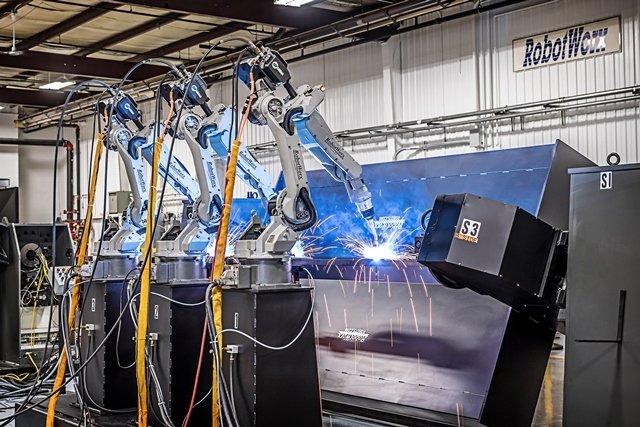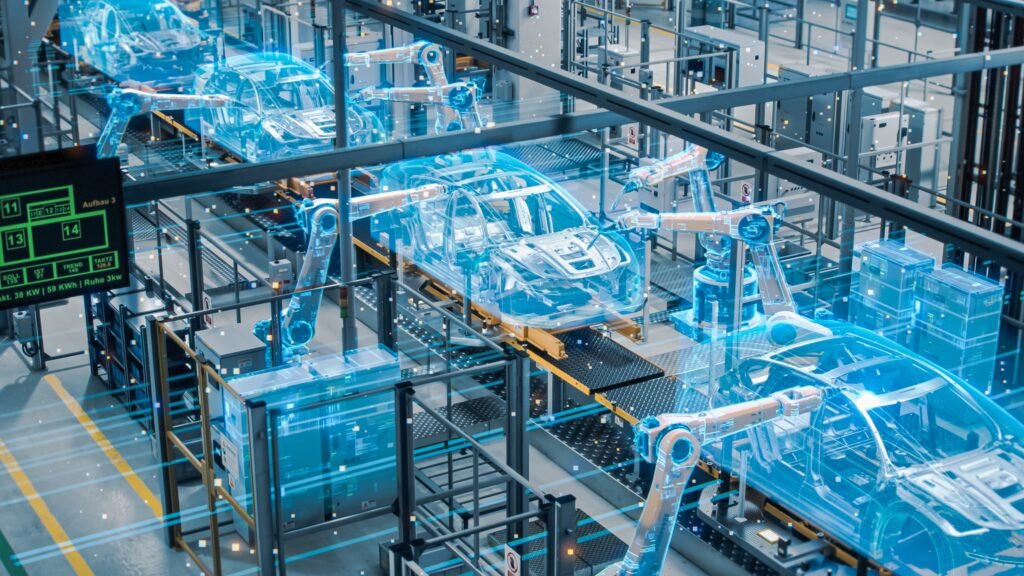Manufacturing is no longer the gritty, labor-intensive scene from decades ago. Instead, it’s a high-tech arena where robots are taking over tasks that were once the sole domain of human hands. This shift, often termed “The Rise of Robotics in Manufacturing,” is doing wonders for efficiency and safety in factories worldwide. But what exactly does this rise entail? And how is it reshaping the manufacturing landscape? Let’s dive into the nitty-gritty and uncover the marvels and nuances of this robotic revolution.
The Evolution of Manufacturing: From Manual to Robotic
A Brief History
Remember the days when manufacturing meant rows upon rows of workers, tirelessly toiling away? Back then, the introduction of basic machinery was revolutionary. Fast forward to today, and we’ve got robots performing intricate tasks with precision that human hands can hardly match. This leap didn’t happen overnight, though. It’s been a gradual evolution driven by relentless innovation.
Early Automation
In the 20th century, automation began to take root with simple mechanical arms and conveyor belts. These early systems, while groundbreaking, were limited in functionality and required significant human oversight. However, they set the stage for more advanced technologies.
The Dawn of Industrial Robots
The 1960s saw the introduction of the first industrial robot, Unimate, which revolutionized the automotive industry. This marked the beginning of a new era where robots could perform repetitive tasks faster and more accurately than humans. As technology advanced, so did the capabilities of these robots.
Benefits of Robotics in Manufacturing
Enhanced Efficiency
Let’s face it—humans need breaks, sleep, and occasionally, a day off. Robots? They’re tireless workers. They can operate 24/7 without a hiccup, leading to significantly higher production rates. Here’s how:
- Consistency: Robots don’t get tired, ensuring uniformity in the production process.
- Speed: They work faster than humans, cutting down production time.
- Precision: With advanced sensors and software, robots achieve levels of accuracy that are hard for humans to match.
Improved Safety
Manufacturing environments can be hazardous. From handling heavy materials to working with dangerous chemicals, the risks are plenty. Robotics help mitigate these dangers:
- Reduced Human Involvement: Robots can take over risky tasks, keeping human workers out of harm’s way.
- Accident Reduction: Automation leads to fewer human errors, significantly cutting down on workplace accidents.
- Monitoring and Maintenance: Robots equipped with sensors can monitor environmental conditions, preventing accidents before they happen.
Cost Savings
While the initial investment in robotics can be hefty, the long-term savings are substantial. Here’s why:
- Lower Labor Costs: Robots can replace multiple workers, reducing payroll expenses.
- Increased Production: Faster production rates lead to higher outputs and greater revenue.
- Maintenance: Robots often require less maintenance than human-operated machinery.
Challenges in Adopting Robotics
High Initial Costs
The upfront cost of purchasing and integrating robotic systems can be a significant barrier for many manufacturers. Smaller businesses, in particular, may struggle with the financial investment required.
Technical Complexity
Implementing robotic systems isn’t as simple as flipping a switch. It requires:
- Specialized Knowledge: Skilled personnel to program, operate, and maintain these systems.
- Integration: Ensuring new robotic systems work seamlessly with existing machinery and processes.
Workforce Impact
The rise of robotics has led to concerns about job displacement. While robots take over repetitive tasks, there’s a growing need for workers skilled in robotics and automation. This shift necessitates retraining and upskilling the existing workforce.
Images of The Rise of Robotics in Manufacturing: Enhancing Efficiency and Safety




Real-World Applications
Automotive Industry
Perhaps the most well-known adopter of robotics, the automotive industry uses robots for everything from assembly to painting. The precision and efficiency of robots have made car manufacturing faster and safer.
Electronics Manufacturing
In the production of electronics, where tiny components require meticulous handling, robots excel. They assemble, test, and package products with a level of precision that’s hard for humans to achieve.
Food and Beverage Industry
Robots are making waves in food and beverage manufacturing, handling tasks like sorting, packaging, and even cooking. Their ability to maintain hygiene and consistency is invaluable.
Pharmaceuticals
In an industry where precision is crucial, robots handle the production and packaging of medicines, ensuring each dose is accurate and contamination-free.
The Future of Robotics in Manufacturing
Artificial Intelligence Integration
The next big leap in robotics involves integrating artificial intelligence (AI). AI-powered robots can learn and adapt, making them even more efficient and versatile. Imagine robots that can predict maintenance needs, adjust to new production requirements on the fly, and even work alongside humans more intuitively.
Collaborative Robots (Cobots)
Cobots are designed to work alongside humans, enhancing their capabilities rather than replacing them. These robots are user-friendly, safe, and adaptable, making them ideal for small and medium-sized enterprises.
Advanced Sensors and Connectivity
With the advent of the Internet of Things (IoT), robots are becoming more interconnected. Advanced sensors enable real-time data collection and analysis, optimizing production processes and predictive maintenance.
FAQs
What are the main benefits of using robots in manufacturing?
Robots enhance efficiency, improve safety, and lead to significant cost savings. They work faster, more accurately, and without the need for breaks, making them invaluable in boosting production rates and maintaining high quality.
Are robots replacing human jobs in manufacturing?
While robots do take over repetitive and dangerous tasks, they also create new opportunities. There’s a growing demand for skilled workers to manage, program, and maintain these robotic systems. So, it’s more about job transformation than outright replacement.
What industries benefit the most from robotics?
Industries like automotive, electronics, food and beverage, and pharmaceuticals have seen significant benefits. Any industry that values precision, speed, and safety can leverage robotics effectively.
What are the challenges in adopting robotics?
High initial costs, technical complexity, and workforce impact are the main challenges. Businesses need to invest in training and integration to fully realize the benefits of robotics.
Conclusion
The rise of robotics in manufacturing is a game-changer. It’s not just about replacing human labor but enhancing what humans can achieve through collaboration with advanced technology. From boosting efficiency and safety to transforming job roles, robotics is paving the way for a smarter, more productive future in manufacturing. Embracing this change, while navigating the associated challenges, will be crucial for businesses looking to stay competitive in an ever-evolving market.
As robots continue to evolve, who knows what new heights they’ll take manufacturing to? One thing’s for sure—the future of manufacturing is here, and it’s incredibly exciting!


